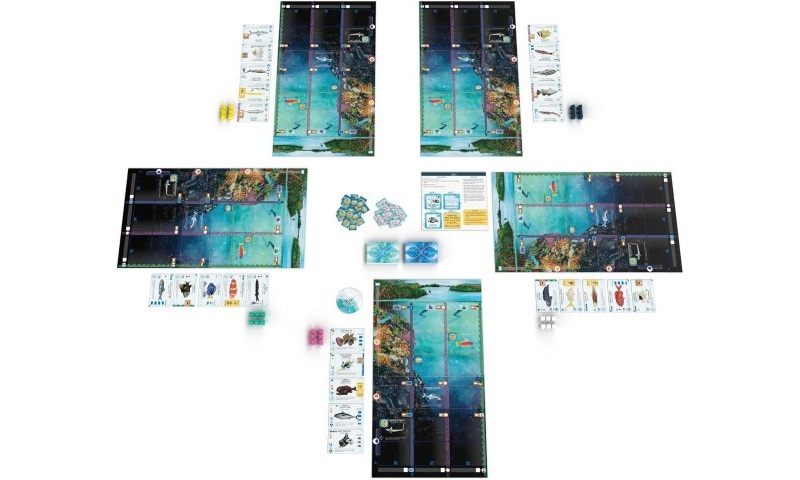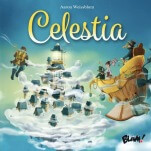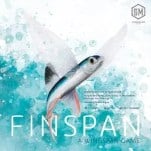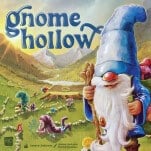The Great Board Game Finspan Is a More Accessible Wingspan with a Ton of Fish
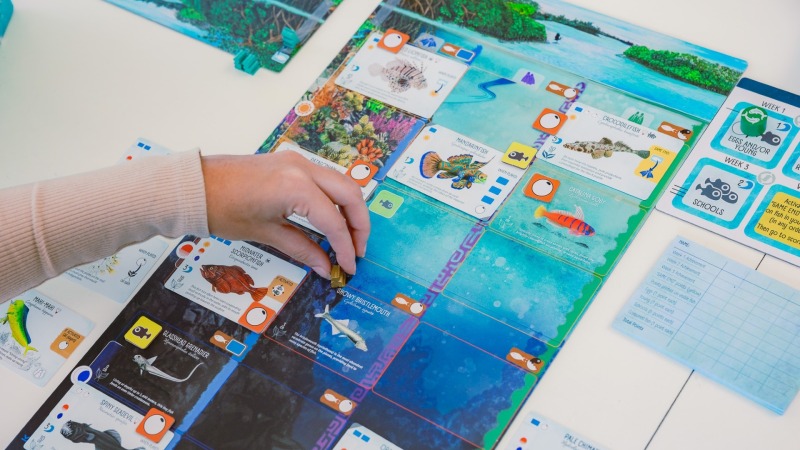
Finspan is now the third full game in the X-span series, or the second spinoff of Wingspan, depending on your perspective, with all games sharing the same core mechanics of tableau- and engine-building with cards. Where last year’s Wyrmspan delved into the fantastical and provided a more complex playing experience than Wingspan does, Finspan goes in the other direction, simplifying some of the rules for a game that’s easier to learn and generally more forgiving without sacrificing what made the original so great.
If you couldn’t catch the hook from the title, Finspan is a game about fish, and players’ boards show three diving sites in their part of an unnamed ocean, with each ocean divided into three zones representing different depths—the sunlight, twilight, and midnight zones, top to bottom. Your player board is now oriented vertically on the table, the first difference you’ll spot from the other ‘spans, so divers will move down a column (dive site) when you choose that action.
In all of these games, players play cards from their hands to their player boards, paying an appropriate cost in resources, and in most cases one of three things happens: they gain an immediate, one-time benefit from playing the card; they gain a benefit every time the card is activated on later turns; or they gain a game-end bonus. In Finspan, the resources are much easier to manage and it’s impossible to go more than one turn without somehow getting enough stuff to play a card on the next go-round.
Over the course of the game, each player will take 24 turns, six per round (‘week’), playing cards and diving, then taking additional actions like laying eggs on fish, hatching eggs into young (you can tell they’re young because the fish icons are on their phones), and combining three young on one fish card to form a school. The resources you need to play cards are all listed in that last sentence—you may have to discard one to three cards from your hand, or discard eggs, young, or even a school. In Finspan, you can also play a fish on top of another fish, as long as the covered fish has a smaller … uh, finspan, listed in centimeters (because we’re not savages) on the lower left of each card. Some cards even require that you play them on top of another card, consuming the latter one, because they’re predator fish. Fish may be playable anywhere on the board, but many require that you place them in a specific zone or two, or into a specific column. Fortunately, the game relaxes the requirement that you fill spots sequentially, so you can play cards anywhere within a dive site as long as you’ve met the card’s criteria.
-

-

-

-

-

-

-

-

-

-

-

-

-

-

-

-

-

-

-

-

-

-

-

-

-

